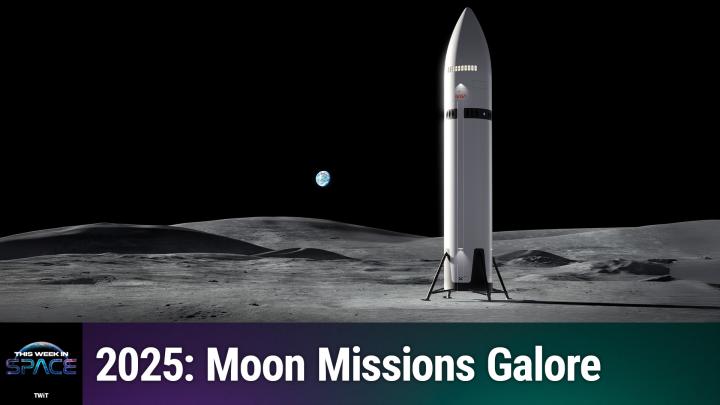The Great Lunar Armada: A Deep Dive into the Thrilling World of Moon Exploration
AI created, human edited.
The moon, our celestial neighbor, has captivated humanity for centuries. Now, in an exciting new era of space exploration, a diverse array of private companies and nations are embarking on ambitious missions to uncover the secrets and potential of Earth's only natural satellite. In the latest episode of This Week in Space, hosts Rod Pyle and Tariq Malik delve into the thrilling world of lunar exploration, discussing the various moon missions currently underway or on the horizon.
One such venture is Firefly Aerospace's Blue Ghost lander, set to touch down on the lunar surface in March 2nd. Blue Ghost will carry an array of scientific instruments to study the moon's composition, heat flow, and electrical conductivity, as well as demonstrate novel technologies like a robotic arm and a "Lunar Planet Vac" designed to collect surface samples.
Equally exciting is the Hakuto-R mission, developed by Japanese company ispace. This dual lander-rover system will investigate the moon's resource potential and conduct experiments related to food production and oxygen extraction. The mission also features unique artistic elements, such as a miniature "Moon House" sculpture by Swedish artist Mikael Genberg.
Pyle and Malik also delve into the technical aspects of these missions, explaining how Intuitive Machines' Nova-C lander will use a drill and mass spectrometer to search for water ice at the lunar South Pole. They highlight the scientific potential of such discoveries, which could pave the way for sustainable human habitation on the moon.
Throughout the discussion, the hosts provide historical context for the current lunar exploration efforts. They reflect on the legacy of the Google Lunar X Prize, which spurred innovation in the private space sector, and pay tribute to early pioneers like Israel's SpaceIL, whose Beresheet lander made a valiant attempt to reach the moon in 2019.
Looking to the future, Pyle and Malik consider the implications of China's ambitious lunar program, which includes plans for a robotic research station in partnership with Russia. They also celebrate India's recent achievements in space, including the successful demonstration of autonomous docking capabilities, which could prove crucial for the country's upcoming lunar sample return mission.
Amidst the excitement, the hosts also grapple with the challenges facing lunar exploration. They discuss the technical hurdles that have plagued past missions, such as the thruster issues experienced by Intuitive Machines' Nova-C lander during its transit to the moon. They also touch on the geopolitical tensions and budgetary constraints that have hindered progress in some countries, most notably Russia.
Yet, despite these obstacles, Pyle and Malik remain optimistic about the future of lunar exploration. They marvel at the rapid pace of technological advancement and the growing role of private companies in pushing the boundaries of what's possible. As they see it, the "Great Lunar Armada" represents not just a series of individual missions, but a collective human effort to unlock the secrets of our celestial neighbor and expand the frontiers of our knowledge.
For space enthusiasts and casual listeners alike, this episode of This Week in Space offers a wealth of insights and inspiration. So why not embark on your own lunar adventure? Tune in now to learn more about the incredible missions that are reshaping our understanding of the moon and setting the stage for a new era of human exploration.
